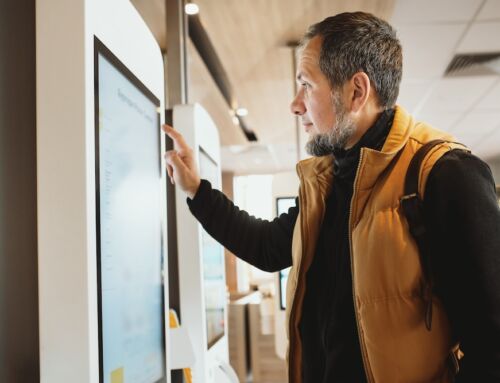Omnichannel is a term you hear crop up in business a lot these days. It means, as per Tech Target, “provid[ing] customers with a seamless and unified brand experience, regardless of which channel they use.”
What this means in plain English is as follows. In the modern world, largely thanks to digital technology, business is conducted in lots of different places, or ‘channels’. People don’t just walk into a shop to make a purchase these days. But there’s no single place to buy online, either. E-commerce sites, mobile apps, marketplaces, ordering and delivery platforms for food, even social media – all count as different channels.
And even when we look at on-premise commerce across the retail, hospitality and leisure industries, things are a lot more varied these days. There’s no single point-of-sale option anymore. In addition to conventional checkouts, you have self-service kiosks, you have mobile POS, and you have hybrid ‘phygital’ options like click-and-collect and in-app ordering at restaurants.
So many channels, and what businesses are striving for is a consistent, seamless, high-quality experience across them all.
It’s not easy, and there are plenty of barriers. One of the biggest dilemmas facing omnichannel integration centres around personalisation. The aim these days is not just to give customers a consistent, seamless, high-quality experience however and wherever they want to interact with your business. It’s to create an experience that is personally relevant and targeted to them.
But before you can do that, you have to know who your customers are. Across every single channel they use.
A single customer view across every channel
In the normal course of things, that just doesn’t happen. You might have an in-store loyalty scheme, for example. But are the credentials people use to sign-up for and use that the same as those they use for their online shopping account, or the log-in for your mobile app? Probably not.
The answer lies in adopting single user ID. It’s a simple concept – a single user account for every customer, used across all your different channels, on premise and online.
The benefits are enormous. While today’s businesses rightly value customer data highly, what they actually know about their customers is fragmented and incomplete. That’s precisely because of the difficulties tracking individual behaviours across multiple channels. If one of your best online customers decides to head into a store to make a purchase one day, you might not even know about it. There’s no way to join the threads together.
Single user ID does that. It lets businesses fill in the blanks and get a full picture of who their customers are across all touchpoints. That then leads to being able to deliver a more sophisticated level of personalisation, wherever and whenever each person engages.
Overcoming the technical hurdles
So why isn’t single user ID the norm already? There are technical challenges, mainly around how data is gathered, integrated and shared across different systems. Pulling data together about a single user from multiple different touchpoints first of all requires breaking down the silos that separate them, and then ensuring they’re all speaking a common language so the data can be shared and used effectively. With modern API-based tech infrastructures, it’s becoming increasingly possible. But still not straightforward.
Another challenge lies in usability, or how you make it easy for customers to ‘log in’ at every touchpoint. This isn’t a major issue for digital channels, and indeed, single sign-on (SSO) protocols for multiple apps and platforms are already commonplace, especially in the context of using a single smartphone ID to manage access to multiple apps on your phone.
But we’ve already highlighted that issue of having zero visibility of digital customers if and when they head into your store, restaurant or any other type of premises. The digital-physical divide remains a big challenge for single user ID. How do you make it easy, intuitive and user-friendly for people to ‘log in’ in person?
It boils down to how you can make a digitised SSO system work in a physical environment. There are various possible solutions already available. Running with the mobile SSO idea, you could allow customers to use their phone to ‘tap in’ using a QR code or NFC.
And then there’s the role of biometrics. The likes of face, retina and fingerprint scanning are already recognised as the future of identification and authentication across the board. The beauty of biometrics is that it combines security with simplicity for the end user. Because biometric data is so unique to the individual, it’s very hard to ‘cheat’ authentication systems. Plus putting your finger on a reader or looking into a camera is a lot easier than remembering a password of dubious worth so far as security goes.
Biometric identification is already well-established in the latest generations of smartphones. And at Acante, we’ve been building biometric scanner modules into kiosks for identification purposes for years. Put the two together, and you have the perfect way to link a digital SSO system with on-premise registration, bridging that digital divide in single user ID in a secure but user-friendly way.




